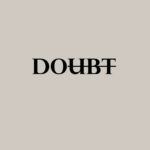
Goal setting is not a new concept. At some point in our lives – in kindergarten, in high school, right before graduation – we have set goals for ourselves. However, goal setting has become so familiar it sometimes becomes a perfunctory act. We set goals, and then we forget to track and actively work towards them and we hope they magically get fulfilled.
It takes actionable planning, diligence, and intentionality to work towards your goals. This is why actionable soal setting is a more practical approach to set and track your goals for quantifiable growth.
What is your pain point?
There are many types of goals we can set for our lives —finishing school, saving more money, getting married, reaching a career milestone, moving to a different city/country, etc. However, many of us want to improve but do not know where to start.
The first step in setting goals for your life is to identify your pain point. Identifying your pain point tells you what exactly needs fixing or improvement in your life, or at least it points you in the right direction to look. This will give you an idea of which goals to set. If you feel that aching need to grow and be in constant forward momentum you are already on the right track.
Actionable Goal Setting Time Frame
One rule of goal setting I have based on personal experience is that it is better to set small actional goals with quantifiable milestones. This structure makes your goals more trackable and achievable. Breaking your life goals into smaller goals might be just what separates a goal from a pipe dream or a wish.
Long-term goals are great. Short-term goals are more practical. Yes, you can set bigger long-term goals, but you have to also break them down into smaller goals that can be tracked. They say our life is the summation of how we spend our days. In the same vein, our long-term goals are the summation of our short-term goals.
For actionable goals, I’ll suggest setting three-goal time frames. One month, three months, and six months. But you could also break your long-term goals into monthly goals, weekly goals, and even daily goals.
“The more you think and talk about your goals, the more positive and enthusiastic you become.” – Billy Cox
I’m going to walk you through a goal-setting system that can also help you set more actionable and quantifiable goals in different areas of your life.
One-Month Goals
Your one-month goals should be small and quantifiable. Time flies when all you’ve got is four weeks, so you have to start working towards your monthly goals immediately. These goals could be anything from sending an email to a potential mentor, taking an online class, or saving a certain amount of money. One-month goals also help you practice how to complete your longer-term goals. Yes, that feeling of striking it off the list is supposed to give you a high that’ll drive you towards your other bigger goals. You can set a bunch of one-month goals and churn them out month after month. If there are goals you fail to achieve within the one-month time frame, that’s ok. You can move them to the three-month goal time frame. Remember to be flexible so long as you don’t lose focus. Your goal setting might need some tweaks and adjustments before you find the right balance and formula that works for you.
Three-Month Goals
Three-month goals should be meatier than your one-month goals and would require more planning, actionable steps, and follow-up. They say it takes 66 days to form a habit, so this is the best time frame to set your habit-forming goals. Three-month goals should help you make significant changes in your life that can be quantifiable. They should also help you measure your consistency with your goals. If you can keep it up for three months, chances are you are well on your way to being a more actionable and goal-oriented person.
Six-Month Goals
Six-month goals are good practice for setting goals that are more long-term. With six-month goals, you can set a few qualitative goals as well. By the time you get to your six-month goals, you should have mastered how to work towards your goals with more intentionality. If you’re following the actionable goal-setting steps, then your 6-month goals should be made up of smaller short-term goals while working up to the big finish.
Types of Goals

Our lives are broken down into different areas and facets, and so it helps to break down your goals into different categories and aspects of your life. You could have career goals, personal development goals, health goals, finance goals, and even friendship goals. Breaking it down into categories helps with tracking. Above all, it helps work on building a well-rounded life. Lets’s talk about some major types of goals
Career Goals
Career goals are goals that have to do with your career and your job. However, after setting career goals, it can be easy to forget about them and hope that somehow they work themselves out. Like setting a goal to get a promotion and then just hoping and praying it happens before your set deadline. That’s not goal setting, that’s wish-making. Actionable goal setting involves setting steps you are going to take in the next year that will almost certainly guarantee that you get that promotion. You can start by setting smaller and easily achievable goals like — collaborate on a project with a different department to get more recognition for your department, take a professional course and apply what you learned to your job tasks in an evident way. Small and quantifiable goals like this all feed into your long-term goal of getting a promotion in the next year. That is actionable goal setting.
Creative Goals
Creative goal setting is for those who want to branch out of the norm and do something creative which might be out of their comfort zone. Creative goal setting requires a lot of intentionalities and a willingness to try new things. A lot of times, with our creative goals, we have time constraints. With already a full-time job taking up our days, balancing our creative goals with our day-to-day can be quite a challenge. Thus you must take this into account when setting creative goals. Creative goals could include anything from taking up a new hobby, getting involved with a creative community, taking a business/entrepreneurship class, implementing one of your many ideas, starting a creative idea journal, or even performing at a poetry slam. It all starts with having the courage to push yourself out of your comfort zone.
Self-development Goals
Self-developmental goals are precisely what they say they are: goals to help you develop and grow as a person. Self-development goals can range through a lot of things. Some examples are:
- setting a productive morning or night routine
- reading more books
- making more meaningful friendships
- learning to be a better listener
- practicing emotional intelligence
- learning to meditate
- being more self-aware
- being a more conscious consumer
- even day-to-day things like practicing patience and longsuffering with a roommate or co-worker you can’t stand. Hey! We’ve all been there.
I state this category of goals specifically because I believe as adults, we have to take actionable steps to work on the person we want to become. We can’t sit and expect to magically evolve and grow into a more mature person. It takes work to hold on to your best sides, work on your bad, not break under life’s pressures, and evolve into a well-rounded individual.
Learning Goals
“Once you stop learning, you start dying” –Albert Einstein.
Speaking of self-development and growth, learning goals are one goal category that I’ll implore everyone to try out. It could be minimal like reading for 30 mins every week, but it will have a very vast and positive impact on your person. We must seek to learn continuously. Your learning goals could include things like learning something new about your field, or it could be branching out to learn new and exciting things in other areas. It can consist of reading books on different topics, subscribing to literary magazines, listening to podcasts, reading autobiographies and memoirs, and even watching documentaries.
Key Performance Indexes (KPIs)
Your KPIs (key performance indexes) are what can help you track your goals. A lot of times, we set goals without setting parameters that will help us track them or quantify our success or even track when the goals are completed. KPIs help us track how well we are doing with our goals.
KPIs are measurable values that can let you know how well you are doing in working towards your goals, and they also let you know when you reach your target. KPI is an acronym used mainly by companies to track the implementation of the performance of their strategies and operations in general. You can apply this to your own life as well. Your KPI depends on your type of goal, but I can give some examples. If your goal is to get better at photography, your KPI can be to take at least one professional shot and edit it to perfection by the end of the month. If your goal is to build your professional network, you can plan to go to a networking event every week, and your KPI can be to get at least two coffee meetings with people you meet at these networking events. KPIs let you know when your goal is completed, and then you can move on to the next! If you want to grow it, you have first to measure it.
External Accountability
We have an extensive article on the topic of using external accountability to achieve your goals. External accountabilities are parameters and parties besides yourself that can help keep you on track when working towards your goals. If your goal is to pick up the habit of reading, your external accountability could be to join a book club and then you become accountable to your book club members. External accountability puts you in the mind frame that you are not just accountable to yourself but also to other people or communities. It involves making commitments that other people can hold you accountable for. That way, you know if you abandon your goals, you are not just letting yourself down but others as well, and that can be a good motivator.
Social media can also be used as a tool for external accountability. Sharing your goals and progress on your social media brings your friends and community along on your journey and then it’s one more thing to keep you going when you feel like quitting. Of course, there are exceptions to using social media as an external accountability tool. Social media is like fire – it can be very useful but tread carefully. Don’t get sucked in.
Now go set some actionable goals!
Goal Setting Sheet
The goal-setting sheet has been specially constructed to help you set and track some goals in the different goal categories listed above. It’s a good tool to help you become a more actionable goal setter. Get a copy here to get started!









